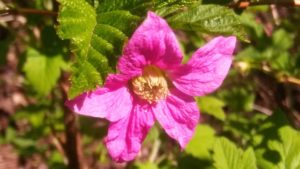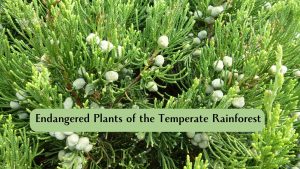The temperature has dropped. The days are shorter. And suddenly, those long afternoons spent exploring outside feel like a distant summer memory.
At Ecolabs, we get it. Winter can make nature-based learning feel impossible. But here’s what I’ve learned after years of bringing forest school principles into our home: nature connection doesn’t stop when we close the door behind us.
Your child doesn’t need acres of wilderness to develop that deep, sensory relationship with the natural world. They need presence, intention, and a parent who’s willing to see the magic in a pinecone collection spread across the living room floor.
Let me show you how to create meaningful nature study activities right in your own home—no matter what the weather’s doing outside.
Why Indoor Nature Activities Matter More Than You Think
Before we dive into the how, let’s talk about the why.
Nature-based learning isn’t just about being outdoors. It’s about fostering curiosity, developing observation skills, and nurturing a relationship with the living world. When we bring nature inside, we’re extending that connection into the spaces where our children spend most of their time.
Research shows that even brief interactions with natural materials can reduce stress and improve focus in young children. During winter months when outdoor time is limited, these indoor nature activities become even more crucial for maintaining that sensory-rich environment our kids’ brains are wired to seek.
Plus, there’s something beautifully subversive about filling your home with sticks, leaves, and stones when the culture around us keeps pushing plastic and screens.
Setting Up Your Indoor Nature Space
You don’t need a dedicated room or fancy equipment. Start with a shelf, a basket, or even a designated corner of your living room.
What you’re creating is a nature table—a curated space that evolves with the seasons and invites exploration.
Here’s what works in our home:
- A low shelf or table your child can access independently
- Natural light, if possible (near a window is ideal)
- Simple containers for sorting and organizing (baskets, wooden bowls, small jars)
- A magnifying glass or two
- Blank paper and drawing materials nearby
- Whatever natural treasures you’ve collected together
The key is keeping it simple and letting it change. This isn’t Pinterest decor—it’s a living, working space.
15 Forest School Activities at Home
1. Create a Seasonal Nature Museum
Turn your nature table into a rotating exhibition. Each week, curate a small collection of items that tell a story about the current season. In winter, this might be evergreen branches, seed pods, interesting bark, and frozen leaves.
Invite your child to be the museum curator. Let them decide what gets displayed, write labels together, and give “tours” to family members. This transforms passive collecting into active learning.
Why it works: This activity builds classification skills, encourages careful observation, and helps children track seasonal changes even when they’re not spending hours outside.
2. Start a Nature Journal (Even for Non-Readers)
Nature journaling isn’t just for older kids. Preschoolers can draw what they see, press leaves onto pages, or dictate observations for you to write down.
Keep the journals near your nature table. Set aside ten minutes a few times a week to simply sit and document something from your collection. Notice the curve of a shell, the pattern in tree bark, the symmetry of a seed.
This is where magic happens—in the slowing down, the really seeing.
3. Build Indoor Sensory Bins with Natural Materials
Fill large shallow containers with materials that change with each season:
- Winter: Dried beans, pinecones, evergreen clippings, smooth stones
- Spring: Flower petals, grass clippings, soft moss, rainwater
- Summer: Sand, shells, smooth river rocks, dried herbs
- Fall: Acorns, colored leaves, wheat stalks, corn kernels
Add simple tools: scoops, tweezers, small containers. Then step back and watch what your child creates.
Pro tip: These work beautifully for nature activities for preschoolers indoors because they engage multiple senses and don’t require fine motor skills your younger child might still be developing.
4. Create Nature Mandalas on the Floor
This is one of my favorite bringing nature inside for kids activities because it’s both creative and meditative.
Clear a space on the floor. Start with a single item in the center—a pinecone, a interesting stone, a seed pod. Then work outward together, creating patterns with your natural materials.
There’s no right way to do this. The process is the point.
When you’re finished, take a photo, then let your child dismantle it and start again tomorrow. This teaches impermanence and presence—lessons our children need now more than ever.
5. Press Leaves and Flowers Year-Round
Yes, even in winter. Pressing evergreen needles, winter-blooming flowers, or even interesting, dried leaves preserves moments in time.
Use heavy books, make DIY plant presses with cardboard and rubber bands, or invest in a simple flower press. Once dried, these become art supplies, bookmark materials, or additions to nature journals.
Waiting is part of learning. Checking on leaves after a few days, noticing how colors change, feeling how flexible leaves become brittle—this is hands-on science.
6. Set Up a Bird Watching Station
Mount a bird feeder outside a window. Set up a cozy spot inside with binoculars, a field guide, and a simple chart for tracking visitors.
This bridges indoor and outdoor spaces beautifully. You’re warm and comfortable but still observing the natural world in real-time.
Keep a running list of species you spot. Notice patterns: What time do certain birds visit? What do they prefer to eat? How does their behavior change in different weather?
7. Grow an Indoor Garden
Start with herbs in your kitchen window. Branch out to microgreens, sprout beans, or forcing bulbs in winter.
Let your child take ownership: watering, measuring growth, harvesting for family meals. This is nature study that feeds you—literally.
The cycle of planting, tending, and harvesting mirrors the rhythms we’d experience in an outdoor garden, just on a smaller, more manageable scale for winter months.
8. Create Nature Story Stones
Collect smooth, flat stones on your nature walks. At home, use permanent markers or paint to add simple images: a tree, a bird, the sun, a flower, and water.
Store them in a small basket. When it’s story time, pull out a few stones and weave a tale together. Your child can arrange them, create sequences, or act out nature scenes.
This activity beautifully combines creative play, language development, and nature connection in one simple practice.
9. Make Nature-Inspired Art with Found Materials
Resist the urge to turn this into a crafting session with glue guns and googly eyes. Instead, think: What can we create with just what nature provides?
- Bark rubbings with crayons and paper
- Painting with evergreen branches instead of brushes
- Stamping with cross-sections of vegetables
- Collages using only natural materials and flour paste
The constraint—using only natural items—actually enhances creativity. Your child has to really look at materials and imagine their possibilities.
10. Build a Mini Indoor Fairy Garden or Small World
Use a shallow tray, basket, or wooden box as the base. Fill it with soil, sand, or moss. Add stones for mountains, sticks for trees, shells for ponds.
This becomes an ever-changing landscape for small figures, a storytelling space, or simply a miniature ecosystem to tend and observe.
The deeper learning: Children begin to understand concepts like habitat, scale, and ecosystem relationships through hands-on play.
11. Study Natural Materials with Magnifying Glasses
Here’s a simple nature study activity that never gets old: really look at things.
Set out a magnifying glass and a few items from your nature collection. Spend time together just observing. Draw what you see. Ask questions: Why is this bark textured this way? How many points does this leaf have? What patterns do you notice?
This is scientific observation at its most fundamental—and most profound.
12. Create a Weather Observation Routine
Set up a simple weather station near your window: a thermometer, a rain gauge, a pinwheel or wind chime to show wind.
Each morning, observe together. Record findings in a journal. Over weeks and months, you’ll notice patterns and your child will begin to understand weather systems and seasonal shifts.
This practice connects your indoor space with the larger natural rhythms happening outside your walls.
13. Make Natural Playdough or Clay
Mix flour, salt, water, and natural additions: lavender, rose petals, clay soil, coffee grounds, crushed leaves.
The sensory experience of making the dough is as valuable as playing with it afterward. Your child learns about textures, measurements, and transformation.
Use natural materials as sculpting tools and props: acorn caps become tiny bowls, sticks become tools, leaves create impressions.
14. Start a Rock and Mineral Collection
Every child goes through a rock-collecting phase. Lean into it.
Create a system for organizing finds: by color, size, texture, or type (if you can identify them). Use egg cartons, muffin tins, or small compartments.
Check out library books about geology. Learn about how different stones form. This is earth science happening in your living room.
For preschoolers: Focus on sensory exploration—smooth versus rough, heavy versus light, shiny versus dull. Classification skills develop naturally through play.
15. Host a Nature Tea Party
Set up a small table with your nicest natural treasures: flowers in a vase, interesting stones as place settings, leaves as plates.
Serve herbal tea (or warm water with lemon) and simple snacks. Talk about where tea comes from, how plants are used for food and medicine, and the ritual of sharing meals.
This activity honors the natural world while creating space for slow, meaningful connection with your child.
Making This Work in Real Life
I know what you’re thinking: This all sounds lovely, but my house is already overflowing with stuff. Where do I even start?
Start small. Choose one activity that genuinely excites you. Because here’s the truth about forest school at home: if you’re not into it, your kids won’t be either. Children pick up on our energy, our curiosity, our genuine interest.
Maybe you’re drawn to nature journaling. Maybe the idea of a bird watching station speaks to you. Start there.
Give yourself permission to keep it simple. You don’t need to do all fifteen activities. You need to find the ones that fit your family’s rhythm and actually stick with them.
Gathering Materials: Where to Find Your Indoor Nature Collection
You don’t need to buy anything. Seriously.
- Your own yard or neighborhood: Sticks, stones, leaves, seed pods, feathers
- Nature walks: The whole point of the walk can become collecting treasures
- The produce section: Save interesting seed pods, shells from nuts, interesting stems
- Friends and family: When people know you’re collecting, they start seeing potential treasures everywhere
- Fallen items only: This is a crucial nature ethic to teach. We take only what the earth has already released
Store items in simple containers: baskets, wooden bowls, glass jars. Avoid plastic when you can—there’s something about natural materials in natural containers that just feels right.
Keeping Nature Activities Fresh and Engaging
The secret to successful indoor nature activities isn’t variety—it’s rhythm.
Children thrive on repetition with slight variation. They want to revisit the nature table daily, check on growing seedlings, add to their rock collection, create another mandala.
What changes isn’t the activity itself, but the materials, the season, the observations, the conversations.
So instead of constantly seeking new activities, deepen the ones you’ve already started. Notice more. Ask different questions. Follow your child’s interests as they emerge.
When You’re Feeling Stuck
Some weeks, your nature table will gather dust. Your child will prefer screens or other toys. You’ll forget to refill the bird feeder.
This is normal. This is real life with children.
What matters is coming back to it. Refreshing the collection. Sitting down together with genuine curiosity. Modeling the behavior you hope to cultivate.
Nature-based learning at home isn’t about perfection. It’s about presence—showing up, again and again, to the small wonders right in front of us.
The Bigger Picture
Here’s what I’ve come to understand about bringing nature inside for kids: We’re not trying to replace outdoor time. We’re extending it. We’re creating a bridge between the wild spaces our children love and the indoor spaces where we spend so much of our lives.
We’re teaching them that nature isn’t just “out there.” It’s here, with us, woven into our daily rhythms and rituals.
When we fill our homes with sticks and stones and living things, we make a statement about what we value. We’re choosing curiosity over consumption. We’re choosing to wonder over convenience.
And our children are watching.
Your Turn
You don’t need to wait for perfect weather or the right season. You can start today with whatever natural materials you already have in your home or can gather on a quick walk around your neighborhood.
Choose one activity from this list. Just one. Try it this week with your child.
Then come back to it tomorrow. And the next day. Watch what unfolds when you give yourself and your child permission to slow down and really see the natural world—even from inside your own home.
Because the forest isn’t just a place we visit. It’s a way of being. And we can bring that way of being anywhere—even into our living rooms on the coldest winter days.
What nature activities resonate most with your family? I’d love to hear what you’re already doing to maintain that connection with the natural world during these shorter days.



